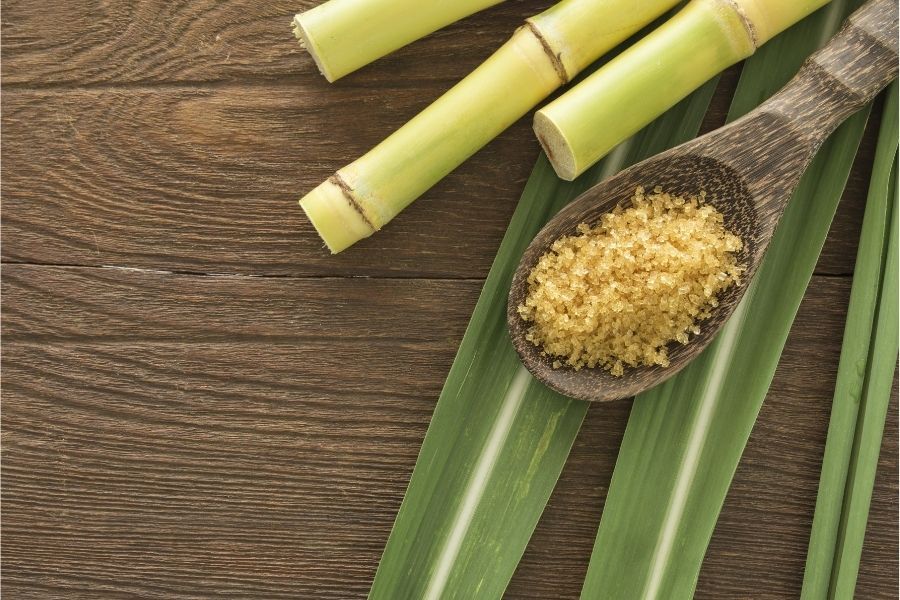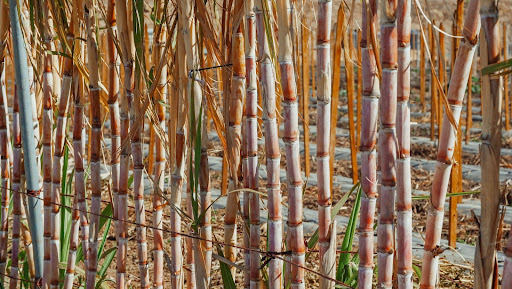The Trip of Cane Sugar Processing: From Harvest to Crystals
The Trip of Cane Sugar Processing: From Harvest to Crystals
Blog Article
A Thorough Guide to the Ecological Effect and Sustainability Practices in Cane Sugar Handling
The environmental effect of walking cane sugar processing provides an intricate selection of obstacles that warrant cautious evaluation. From soil deterioration and too much water usage to the carbon impact related to cultivation and manufacturing, the consequences of conventional methods are significant. In contrast, the adoption of innovative sustainability measures supplies a pathway towards a lot more liable manufacturing methods. Comprehending the interplay between these problems is important for stakeholders in the market. What specific methods can be executed to strike an equilibrium in between performance and environmental stewardship? The responses exist in a more detailed consider both the difficulties and prospective solutions.
Review of Walking Stick Sugar Handling
Walking cane sugar processing involves a collection of organized actions that change sugarcane into polished sugar. Initially, harvested sugarcane is carried to processing facilities, where it goes through cleansing to get rid of dirt and debris. Following this, the walking stick is crushed to extract juice, which is then clarified by removing pollutants with home heating and the addition of lime.
The made clear juice undergoes dissipation, where water is gotten rid of to concentrate the sugar content. This focused syrup is after that taken shape through cooling, permitting sugar crystals to form. These crystals are divided from the staying syrup making use of centrifugation, causing raw sugar. To attain polished sugar, the raw product undertakes further purification processes, which may consist of filtering and cleaning to get rid of staying impurities and color.
The last item is then dried out and packaged for circulation. Throughout this whole process, preserving performance and quality assurance is essential to guarantee the sugar fulfills industry standards. Each action in walking stick sugar handling not just adds to the final item however likewise has effects for resource usage and waste generation, establishing the phase for conversations on sustainability and ecological impacts related to sugar manufacturing.
Environmental Difficulties of Manufacturing
The manufacturing of cane sugar provides several considerable environmental challenges that warrant interest. One primary concern is the considerable use of agrochemicals, consisting of plant foods and pesticides, which can cause dirt deterioration, biodiversity loss, and contamination of regional water sources. The overflow from sugarcane areas frequently carries these chemicals into close-by communities, interfering with marine life and affecting the wellness of areas reliant on these water bodies.
One more obstacle is the high energy usage connected with sugarcane processing. The boiling and refining stages need considerable heat, mostly created by shedding nonrenewable fuel sources, adding to greenhouse gas discharges. Additionally, the extensive acreage needed for sugarcane cultivation can cause deforestation and habitat destruction, more exacerbating climate adjustment and harmful wildlife.
In addition, the labor methods in some areas increase ethical worries, as workers might deal with poor working conditions and inadequate earnings. This circumstance usually perpetuates a cycle of hardship in regional neighborhoods. Cane Sugar Processing. Addressing these environmental obstacles is crucial for establishing more lasting techniques in walking stick sugar production, ultimately profiting both the environment and the areas associated with this market
Water and Land Usage Effect
Water resources and land application go to website are crucial components in the walking stick sugar sector that substantially influence the environment. The growing of sugarcane requires considerable water input, with price quotes recommending that it can consume up to 2,000 litres of water per kilo of sugar created. This extensive usage of water often causes depletion of neighborhood water resources, influencing not only the sugarcane vineyards however likewise surrounding communities and areas that count on the exact same water sources for farming and domestic use.

Moreover, land usage for sugarcane farming can bring about logging and the conversion of natural environments right into monoculture plantations. This method lessens biodiversity, interrupts neighborhood communities, and adds to dirt destruction. The expansion of sugarcane areas usually intrudes on valuable farming land, creating competition for sources between food and biofuel production.
Lasting methods, such as maximizing irrigation methods and applying crop rotation, are necessary to reduce these influences. By taking on more effective water use and land administration methods, the walking stick sugar sector can decrease its environmental footprint, making certain an equilibrium between agricultural productivity and environmental conservation.
Greenhouse Gas Emissions
Greenhouse gas discharges represent a considerable ecological problem within the cane sugar handling industry, specifically as farming practices broaden to meet worldwide demand. The growing of sugarcane, a crop that prospers in tropical environments, depends heavily on artificial plant foods and chemicals, which add to laughing gas exhausts. Additionally, land-use adjustments, consisting of logging for new sugarcane ranches, release carbon dioxide saved in greenery and dirt.
During handling, power usage is an additional major source of greenhouse gas emissions - from this source Cane Sugar Processing. Many sugar mills utilize nonrenewable fuel sources to power equipment and generate warmth, resulting in significant carbon footprints. Moreover, the transport of raw sugarcane and finished items adds layers of discharges through gas combustion in lorries
This entails evaluating current agricultural techniques, processing techniques, and transport systems to recognize locations for improvement and reduction. Resolving greenhouse gas discharges is crucial for cultivating an extra sustainable cane sugar sector in an altering climate.

Lasting Practices and Innovations
Sustainable techniques and advancements are significantly crucial in the cane sugar processing market as stakeholders look for to minimize environmental impacts while keeping efficiency. One considerable development is the application of incorporated crop monitoring, which maximizes resource use by combining soil management, insect control, and plant turning techniques. This approach boosts yield while minimizing chemical inputs and protecting dirt health.
Additionally, the fostering of renewable resource resources, such as biomass from sugarcane residues, has gotten traction - Cane Sugar Processing. By converting waste products into power, refining facilities can reduce their dependence on fossil fuels, thereby lowering greenhouse gas emissions
Water management techniques have likewise seen improvements through the recycling and reusing of water in handling plants, considerably minimizing freshwater intake. Technologies in modern technology, such as precision farming, enable farmers to monitor crop health and resource use better, making certain lasting cultivation techniques.
Additionally, qualification programs like Fair Profession and Rainforest Partnership encourage environmentally liable farming methods more helpful hints and promote social equity within the supply chain. By embracing these sustainable methods and developments, the walking stick sugar handling industry can boost its durability and contribute positively to ecological stewardship.
Final Thought
The environmental effect of cane sugar handling presents considerable challenges, consisting of soil degradation, high water intake, and greenhouse gas discharges, together with moral problems connected to labor techniques. Addressing these concerns through lasting methods, such as incorporated crop monitoring, sustainable power fostering, and water recycling, is crucial. By advertising socially equitable and eco liable techniques in sugar manufacturing, the industry can mitigate its negative impacts, ensuring an extra lasting future for both environments and neighborhoods associated with this field.
Walking cane sugar handling involves a collection of methodical actions that transform sugarcane right into refined sugar. Each action in walking cane sugar handling not only contributes to the final product but additionally has ramifications for resource use and waste generation, establishing the stage for discussions on sustainability and environmental impacts associated with sugar production.
Greenhouse gas discharges stand for a significant environmental issue within the walking stick sugar handling industry, especially as agricultural techniques expand to fulfill worldwide demand.Sustainable practices and technologies are progressively essential in the walking stick sugar handling industry as stakeholders look for to reduce environmental effects while keeping performance.The environmental influence of walking stick sugar handling offers substantial challenges, consisting of dirt deterioration, high water intake, and greenhouse gas emissions, together with honest worries connected to labor techniques.
Report this page